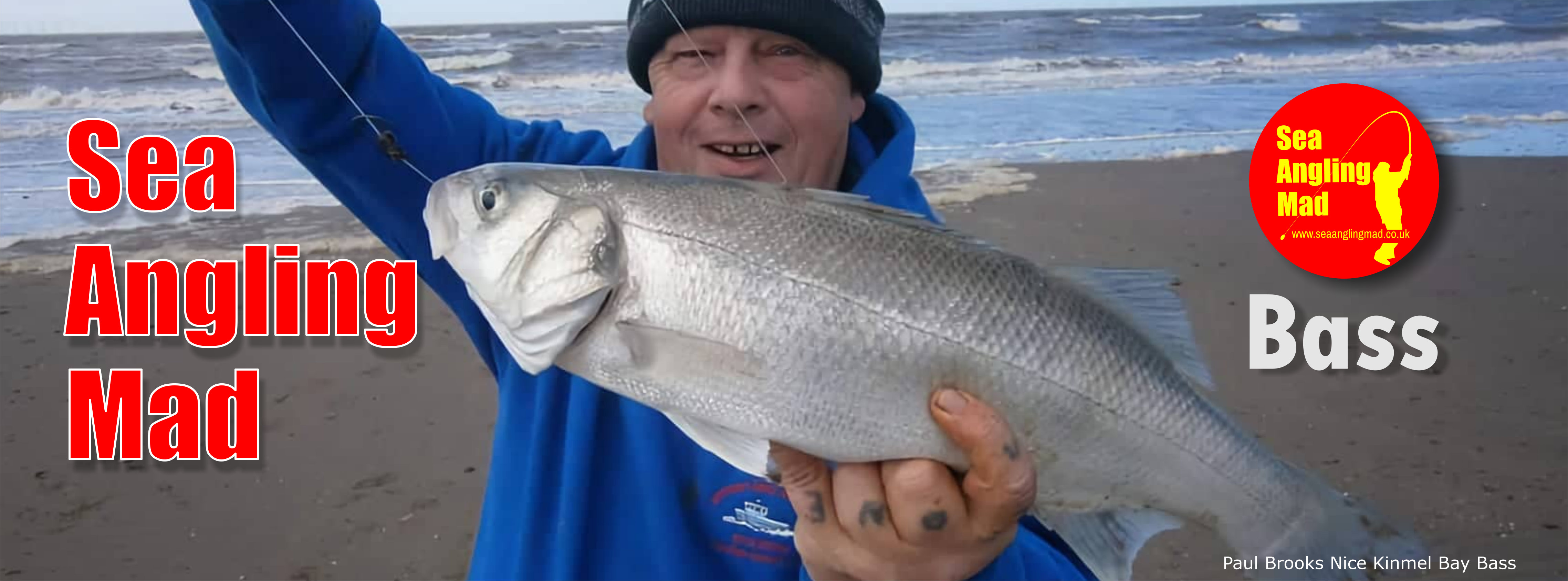
Bass
Last Updated September 2022
Bass are considered one of the most sporting fish in British salt water. Distinct with their silver sheen, spiked dorsal fin and large mouth you’ll easily recognise the first one you catch. Beware of that spiked fin and the razor sharp gill rakes.
They were once considered a summer species only who’s range extended from the Thames estuary in the south east, all around the southern and western coasts as far north as the Dee estuary on the border between Wales and England. In recent years they’ve started to appear in catches from areas where previously they’d been thought non existent due to low water temperatures. They can be found almost anywhere around the coast of Britain. It’s certainly the case that average sea temperatures have risen slightly over the last 100 years, but whether this is due to global warming or just a natural cycle nobody can be absolutely sure. It is though good news for the angler who now has more opportunities to fish for bass.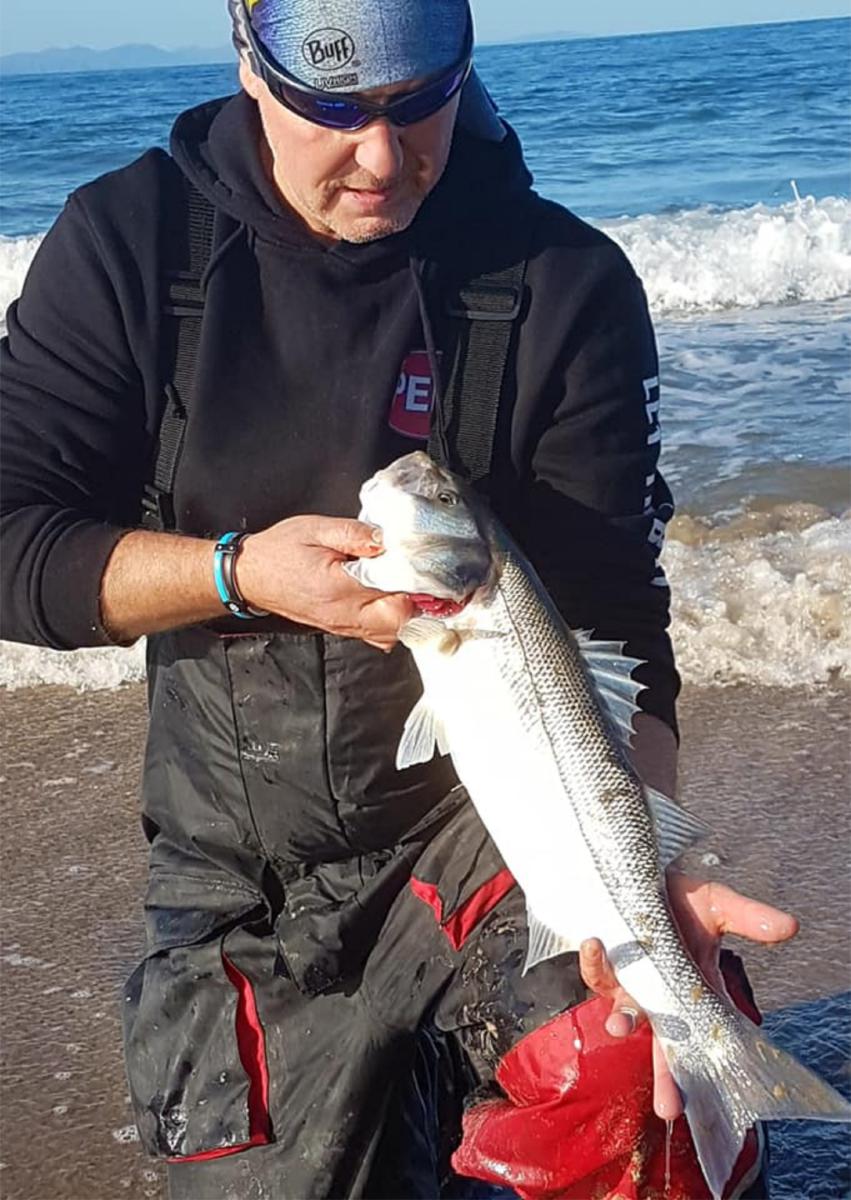
Peter Gabriel with a nice 5lb fish
Many anglers spend all summer and autumn fishing for nothing else but bass. There are a number of clubs and society’s along with numerous websites dedicated to fishing for bass. The majority of fish caught are in the 1lb to 5lb range, with fish up to 3lbs referred to as schoolies. Fish in this range are found in small shoals or schools hence the name. Larger fish of 4lb and above tend to be more solitary.
Bass are subject to a quite stringent rules which vary from year to year. In 2018 all bass caught must be returned no fish can be taken for the pot!
Bass can be caught in all maner of habitats offshore reefs, open beaches, rock marks and, estuaries. Estuaries probably offer the best chance for the first time bass angler to be successful and offer the chance of catching fish using light tackle. Small bass, fish up to around 2lb's or 1kg are not too difficult to catch once located. Best bait in the estuaries, peeler or soft-back crab or fresh worm baits. The small harbour rag worm fished in bunches or 4 or 5 worms on a size 4 hook can be deadly and fishing this way you'll also land your share of flounder.
Being predominantly a spring and summer species it is an ideal target for the holiday angler. In most regions fish start to show from early to mid May and go on right through into October and November. In areas where the sea temperature is highest the fish will show earlier and stay on until late December.
Best time to catch fish is considered to be as the tide is begins to flood from low water for the first 2 or 3hrs. If this coincides with dawn or dusk then even better. In estuaries fish from the beginning of the flood tide to about an hour after the main river channels start to spill over onto exposed sands. On open sandy beaches 1hr down to low and 2 or 3hrs into the flood tide are best. Spinning from rock marks that give access to deeper water can be a bit hit and miss but often gives the best chance of larger individual fish.
Records
British Record 19lbs 11oz Isle of White 2007
Welsh Record 16lbs 8ozs Aberthaw 1980
Last Updated September 2022

Bass are considered one of the most sporting fish in British salt water. Distinct with their silver sheen, spiked dorsal fin and large mouth you’ll easily recognise the first one you catch. Beware of that spiked fin and the razor sharp gill rakes.
They were once considered a summer species only who’s range extended from the Thames estuary in the south east, all around the southern and western coasts as far north as the Dee estuary on the border between Wales and England. In recent years they’ve started to appear in catches from areas where previously they’d been thought non existent due to low water temperatures. They can be found almost anywhere around the coast of Britain. It’s certainly the case that average sea temperatures have risen slightly over the last 100 years, but whether this is due to global warming or just a natural cycle nobody can be absolutely sure. It is though good news for the angler who now has more opportunities to fish for bass.

Peter Gabriel with a nice 5lb fish
Many anglers spend all summer and autumn fishing for nothing else but bass. There are a number of clubs and society’s along with numerous websites dedicated to fishing for bass. The majority of fish caught are in the 1lb to 5lb range, with fish up to 3lbs referred to as schoolies. Fish in this range are found in small shoals or schools hence the name. Larger fish of 4lb and above tend to be more solitary.
Bass are subject to a quite stringent rules which vary from year to year. In 2018 all bass caught must be returned no fish can be taken for the pot!
Bass can be caught in all maner of habitats offshore reefs, open beaches, rock marks and, estuaries. Estuaries probably offer the best chance for the first time bass angler to be successful and offer the chance of catching fish using light tackle. Small bass, fish up to around 2lb's or 1kg are not too difficult to catch once located. Best bait in the estuaries, peeler or soft-back crab or fresh worm baits. The small harbour rag worm fished in bunches or 4 or 5 worms on a size 4 hook can be deadly and fishing this way you'll also land your share of flounder.
Being predominantly a spring and summer species it is an ideal target for the holiday angler. In most regions fish start to show from early to mid May and go on right through into October and November. In areas where the sea temperature is highest the fish will show earlier and stay on until late December.
Best time to catch fish is considered to be as the tide is begins to flood from low water for the first 2 or 3hrs. If this coincides with dawn or dusk then even better. In estuaries fish from the beginning of the flood tide to about an hour after the main river channels start to spill over onto exposed sands. On open sandy beaches 1hr down to low and 2 or 3hrs into the flood tide are best. Spinning from rock marks that give access to deeper water can be a bit hit and miss but often gives the best chance of larger individual fish.
Records
British Record 19lbs 11oz Isle of White 2007
Welsh Record 16lbs 8ozs Aberthaw 1980
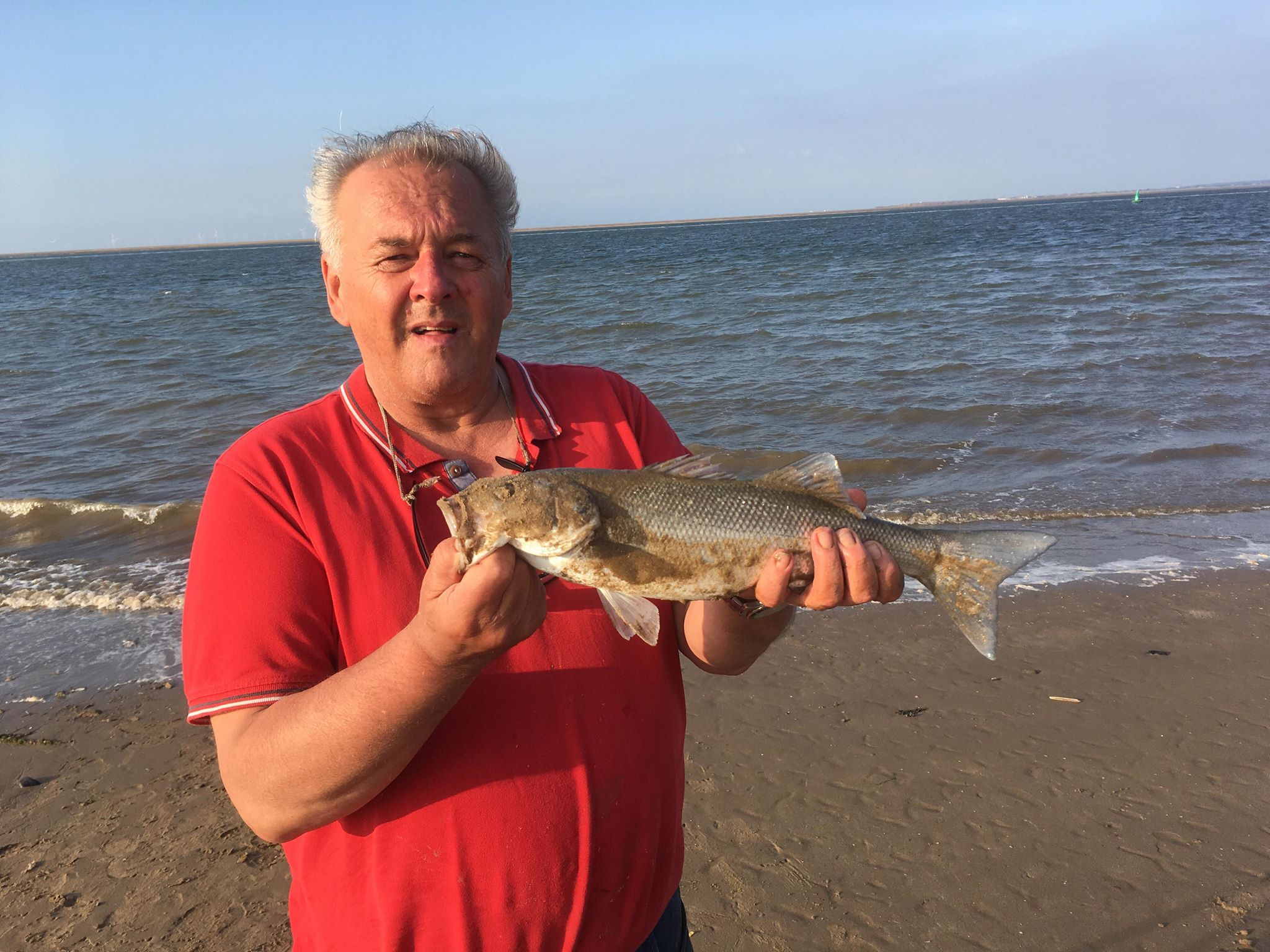
The smaller school bass are good sport on light tackle
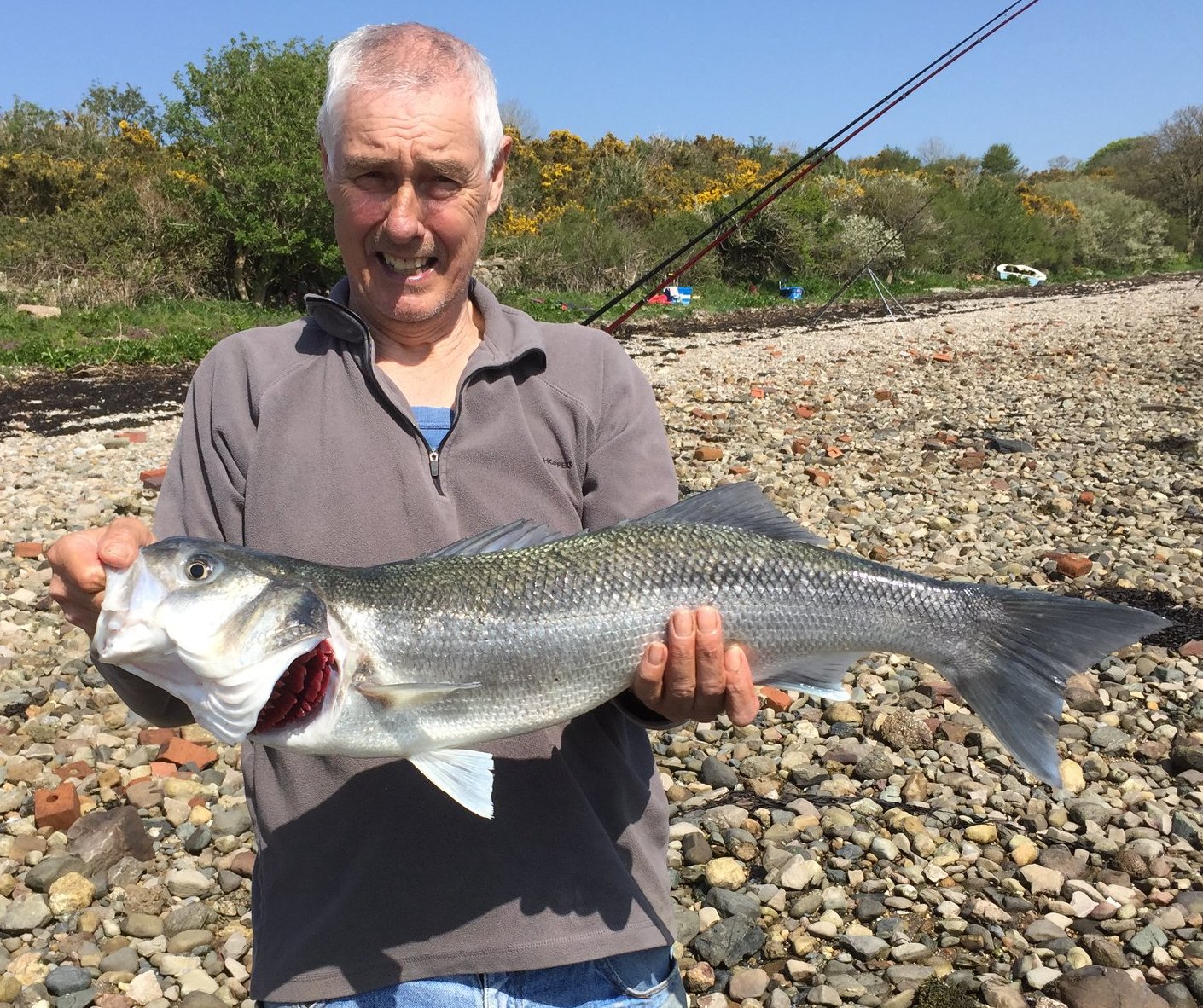
Alan Keith-Slater a nice 7lb plus fish from Menai Straits
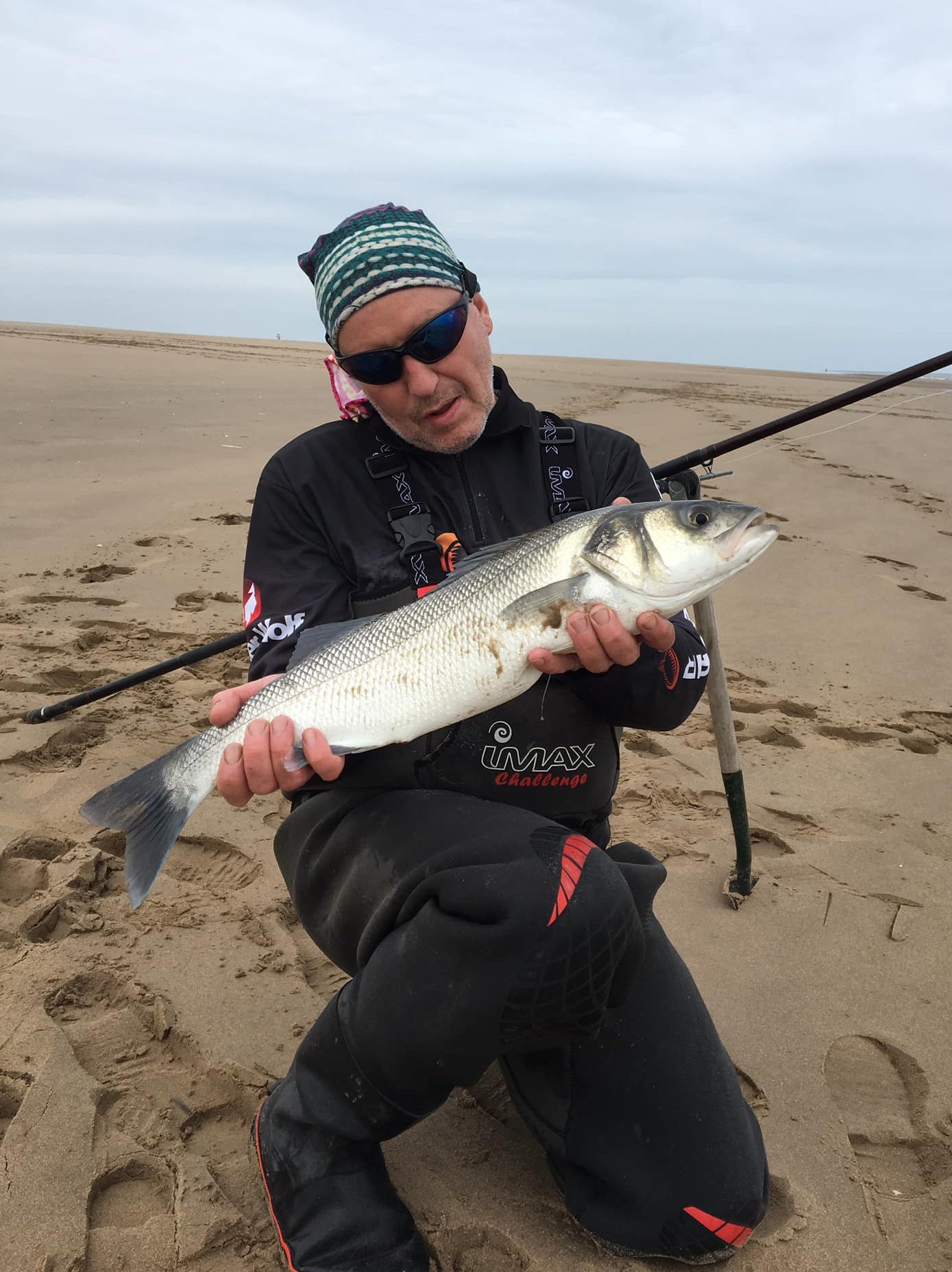
Peter Gabriel Bass
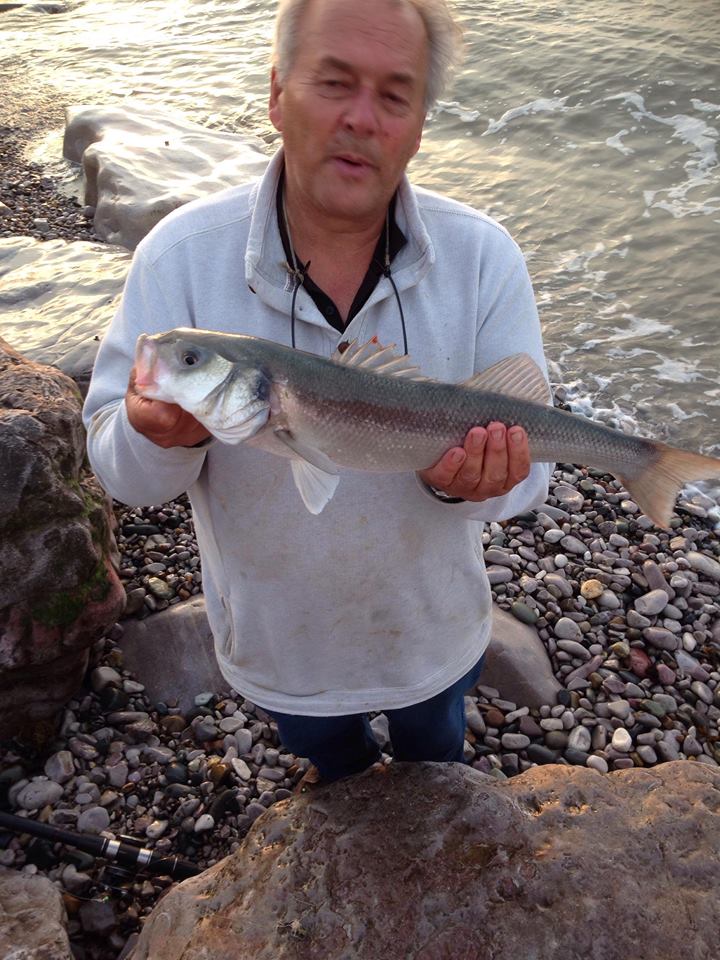
The author with a Pensarn Bass
